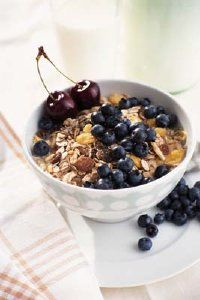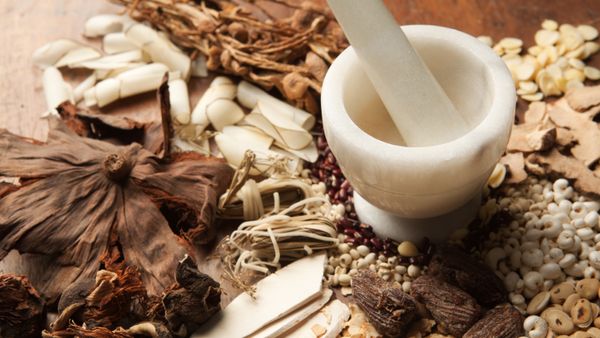The gallbladder is a little pear-shaped pouch tucked behind the lobes of the liver. Its main job is to store up the cholesterol-rich bile that's secreted by the liver. Bile helps your body digest fatty foods. So when that piece of prime rib reaches the intestines, they send a message up to the gallbladder to send some bile their way. Once the bile saturates your steak, it becomes more digestible and easily makes its way through the rest of the digestive process.
At least that's the way things should work. But the reality is that many people, especially older people and women, will have some gallbladder trouble. Ninety percent of the time that trouble is in the form of gallstones. Gallstones form when the bile contains excessive amounts of cholesterol. When there isn't enough bile to saturate the cholesterol, the cholesterol begins to crystallize, and you get a gallstone. These tough bits can be as tiny as a grain of sand or as large as a golf ball. You may not even know you have gallstones unless you happen to have an ultrasound or X ray of your tummy. But the 20 percent of the time that gallstones do cause problems, it's excruciatingly painful.
Advertisement
Gallstones become a problem when they get pushed out of the gallbladder and into the tube that connects the liver and the small intestine. The tube gets blocked, and you get 20 minutes to 4 hours of indescribable agony. Pain usually radiates from your upper right abdominal area to your lower right chest, and it can even leave your shoulder and back in agony. Gallstones typically fall back into the gallbladder or make their way through the duct, leaving you feeling better. After you have an attack, you'll probably be sore and wonder what in the world happened.
Sometimes, though, the gallstones can get stuck in the bile duct. Symptoms of a stuck gallstone include chills, vomiting, and possibly jaundice in addition to the pain described above.
Who's at Risk?
Pregnancy, obesity, diabetes, liver disease, a sedentary lifestyle, a high fat diet, and certain forms of anemia can all increase the risk of gallstones. People who are overweight and lose and gain weight repeatedly are more susceptible to gallstones, as are women who have had two or more children. Lack of exercise is a significant contributor to the development of gallstones. In fact, according to the Nurses' Health Study, inactivity can actually account for more than half of the risk of developing gallstones. Women are twice as likely as men to develop gallstones, although the reasons are unclear. And people older than 60 years of age have a greater risk of gallstones.
Other risk factors include a family history of gallstones and taking hormones, such as birth control pills or estrogen.
Take heart. There are some specific things you can find in your kitchen to help you avoid a gallstone attack and even prevent gallstones from forming in the first place. What you eat has a great effect on whether or not you develop gallstones. Go to the next page to learn about natural home remedies that reduce your risk of gallbladder problems.
For more information about health problems associated with being overweight and how to combat them, try the folowing links:
- To see all of our home remedies and the conditions they treat, go to our main Home Remedies page.
- Gallstones, like kidney stones, can be extremely painful. Learn how to prevent gallstones by reading Herbal Remedies for Gallstones.
- Learn quick and easy Home Remedies for Kidney Stones when you visit this page.
- For tips on how to improve blood sugar metabolism, visit our Home Remedies for Diabetes page.
This information is solely for informational purposes. IT IS NOT INTENDED TO PROVIDE MEDICAL ADVICE. Neither the Editors of Consumer Guide (R), Publications International, Ltd., the author nor publisher take responsibility for any possible consequences from any treatment, procedure, exercise, dietary modification, action or application of medication which results from reading or following the information contained in this information. The publication of this information does not constitute the practice of medicine, and this information does not replace the advice of your physician or other health care provider. Before undertaking any course of treatment, the reader must seek the advice of their physician or other health care provider.
Advertisement


